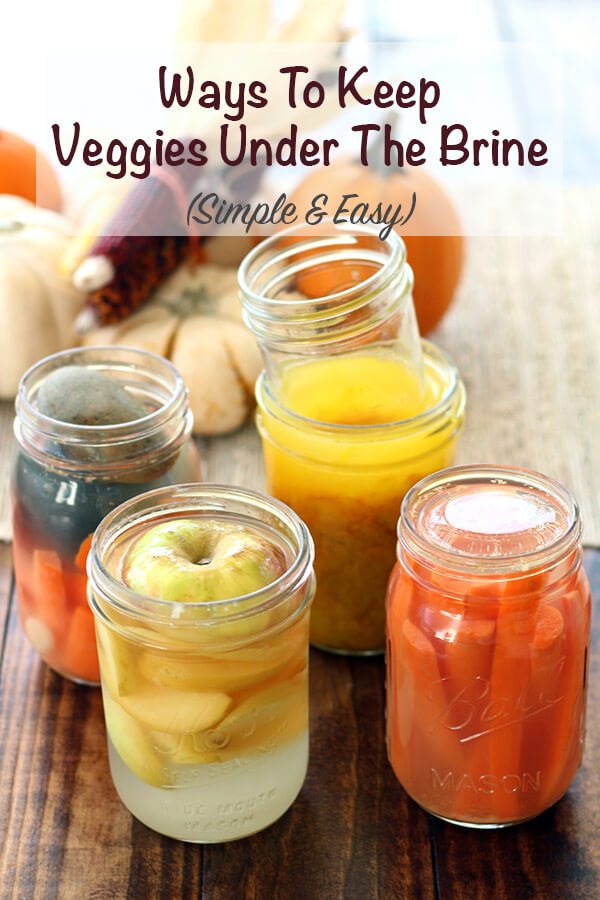
Can’t get your pickles or sauerkraut to stay under the brine during fermentation? It can be frustrating to go through all the effort of chopping, shredding and stuffing your ingredients into jars to ferment… only to find them a few days later with fuzzy mold growing on the little bits that stick out of the brine. I’ve tried many ways to keep veggies under the brine. Here are the ones that work.
Ways To Keep Veggies Under The Brine
Cabbage Leaves
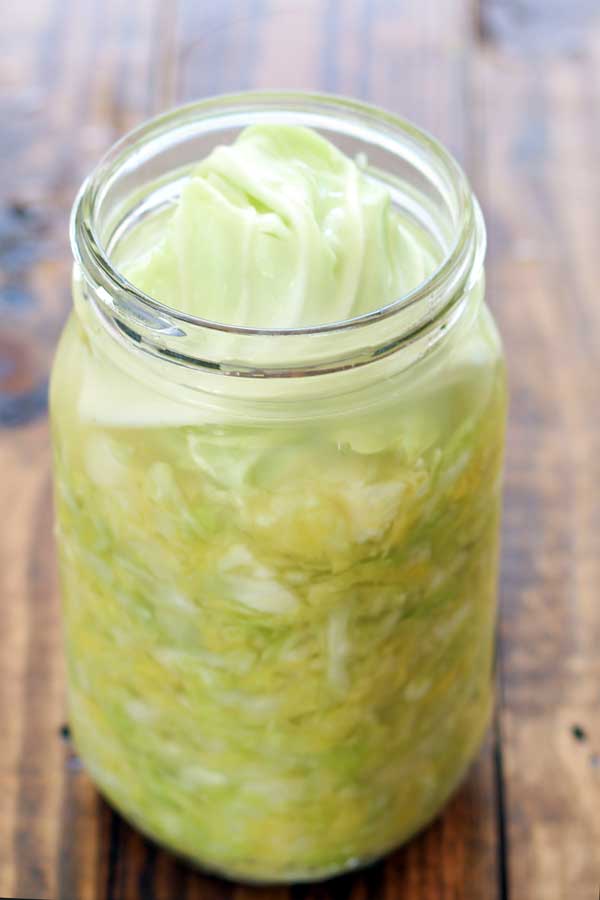
I always use this method when I make sauerkraut because it’s very effective and convenient. This can be used for pickles too if you have a head of cabbage on hand.
Peel two pieces of cabbage leaf, roll it up and stuff it into the jar. The lid will keep it in place. When you’re done fermenting, throw away the cabbage leaf.
Fermentation Weights
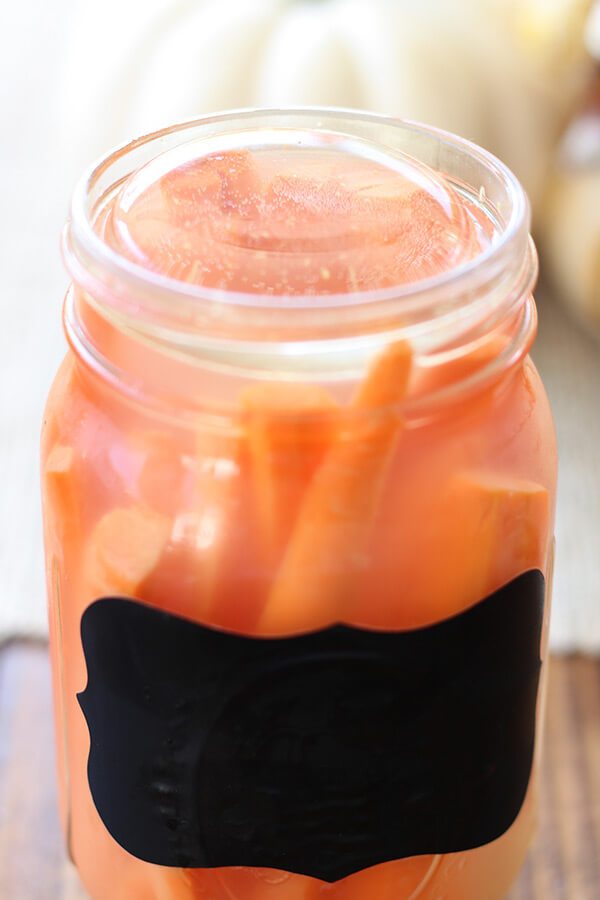
I use fermentation weights the most. They are one of my favorite way to keep veggies under the brine, because they fit perfectly, are heavy enough, and always on hand. I either use pickle pebbles or ceramic weights when fermenting veggies.
Rock
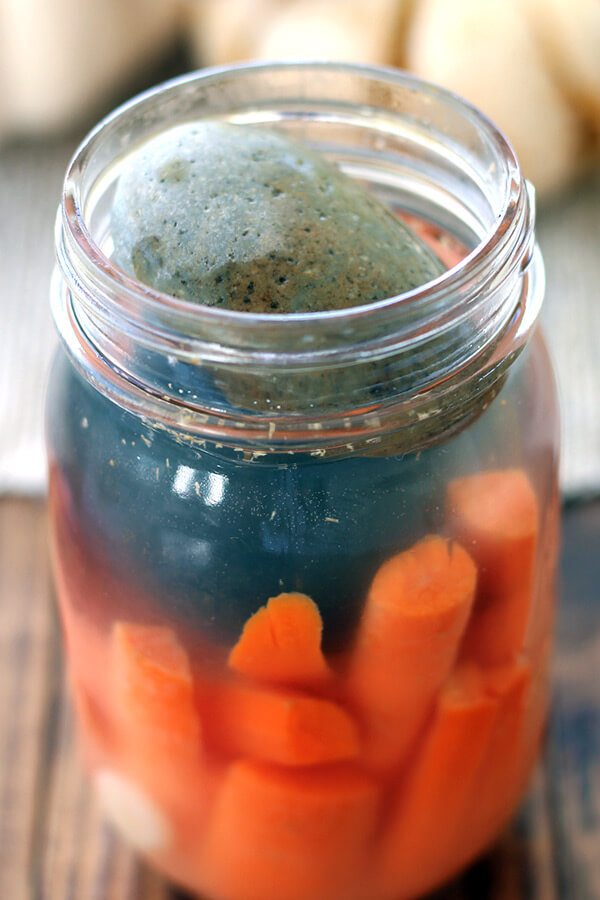
It’s kinda silly, but it works really well. My best friend uses a rock every time she makes sauerkraut. You can find them in any size and weight you want. And they’re free! I recommend boiling the rock for 15 minutes before you use it.
Small Glass Jar
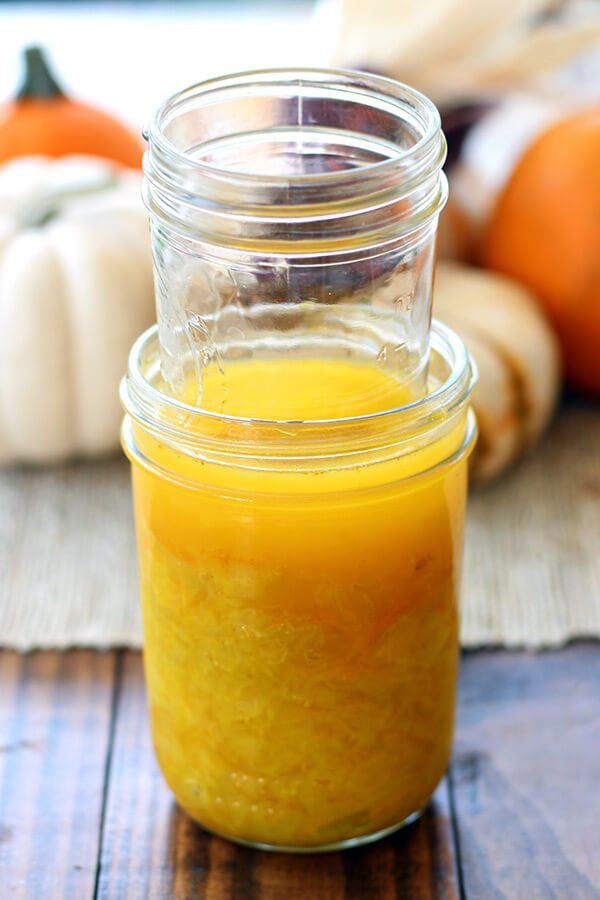
Use a small glass jar or ramekin that will fit inside your fermentation jar. Wide mouth jars work best for this method. If you need to weigh it down even more, put a rock inside the small jar.
Large Pieces Of Fruit Or Veggies
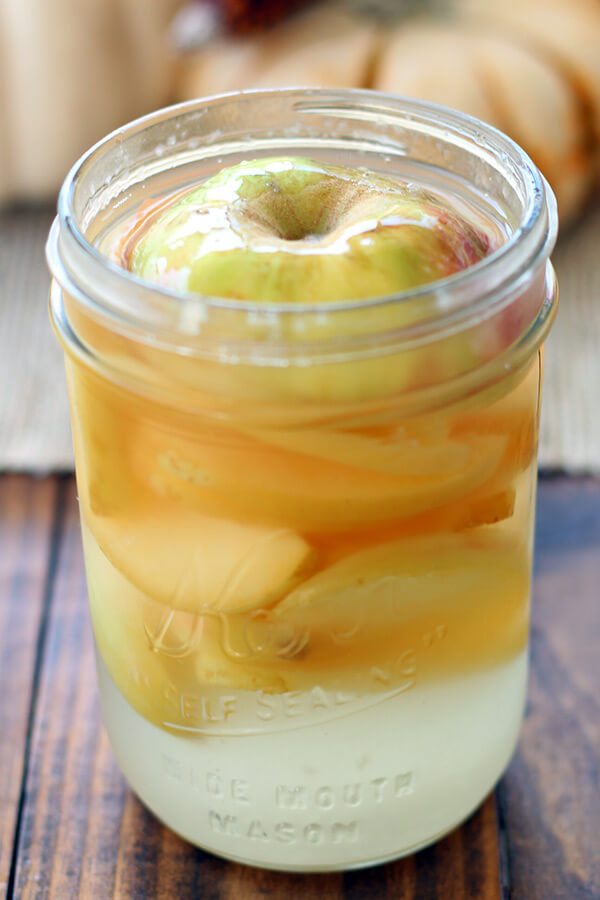
Similar to a cabbage leaf, you can use any piece of fruit or vegetable to weigh down the veggies in the brine. I used a slice of apple to hold down these fermented apple slices. I’ve used leftover carrot chunks, orange slices and large pieces of zucchini. Get creative and use anything that won’t change the flavor of your pickles.
How do you keep your veggies under the brine when making fermented foods? Let me know in the comments below.
Happy Fermenting,
Danielle
I have successfully kept veggies in the brine by topping them with a ziplock bag filled with water which conforms to the size of the jar very nicely.
Louise, I know I couldn’t use plastic bags. Though the technique works well, the plastic degrades with a ferment and for me would contaminate with bpa, petroleum, etc
Oh, I didn’t know! Thanks for this info. I won’t use the baggies for fermenting anymore either!
I am thinking of making a muslin bag and filling it with marbles
Seems like a great idea! They’re great for the weight, and will conform to whatever size you need.
I like the weights. I just bought the pickle pebbles weights that are glass and my problems are solved for me as a new fermenter. Love them
I like using ceramic pie weights in a reusable tea bag. Fills in all the cracks quite well.
I love that idea!
Hi, just found you on Pinterest. I’ve been fermenting for some time now, and I originally bought the Perfect Pickler system. It has stainless steel “jiggers” to weigh down the veggies. I bought some tops and ring liners and Hubs drilled holes in them for air locks, bought o Amazon, but what to use to weight down the veggies. I looked in all my storage stashes and found several small Pimento jars. Perfect. Just put a cabbage leaf on top of whatever veggie you are fermenting and pop on a Pimento jar (without the lid). Screw on top with airlock, wait three or four days and Voila!! Fermented Food.
That’s a great idea! Thank you for sharing :)
Can I add more brine to the process a few weeks into the ferment? I feel like the brine has evaporated or mixed in…
Yes, you can add more brine it it gets low.
I love the various ideas for weights -I am new to fermenting and want to try a few small batches – this will be a great way. I was wondering though how you ‘keep the oxygen out’ as I was reading elsewhere, particularly if you use a smaller jar as a weight? Do you not need to then close the jars with an airtight lid?
A twist that I use when recycling jars (for instance, honey ones or nutella): using small glasses, like shot ones or that size. One can even close the lid sometimes.
I usually use a jar, particularly the Coconut butter jars that fit nicely inside my Fidos. If I need more weight, I put water in the jar and screw on the lid.
Rather new but avid fermenter. When I used my (3) Easy Fermenting Lids the first time making 2 batches of dill pickles, pickled peppers, dilled carrots, and spicy green beans, I needed two more “kits”, so I used sterilized rocks to hold down some dill pickles and then rubber banded a coffee filter around the open lid. For that batch, I swirled the pickles every day to keep mold from forming. Worked well. A week later, I saw on Amazon another type of fermenting kit (for about $30!). Modifying that, I got a 2.5″ deli sampler cup that fit in a 1/2 gallon wide mouth jar and made a few holes in the bottom of the cup so the brine seeps through to keep out the O2 while the cup holds the food down in the brine. That worked great! This method does the same thing as the $30 kit from Amazon and was free as it was a take out food grade container. It does the same thing: Put the cup in place, rubber band on a coffee filter. I do, however, like the Easy Fermenting Lids the best with no weights needed!
Hi all, i use cabbage leaves, if kraut mix is mainly green i put a coupla red leaves if poss, Puts a lovely color into the brew, also to compress before adding weight i use a beer bottle or a wine bottle empty (ahem!) Really gets superb compaction , no need for extra brine ..!For weight i always use a few smooth rocks, (off me hols ..! )or in the crock a jar full of rock, in honey jar on top of well fitting plate .. had great sucess so far..Gareth
I’m using kale leaves and a piece of celery as a weight/wedge for my first veggie ferment…curried cauliflower. The leaves and celery were at liquid level but as the gases build they are rising up. is this okay? do I just throw those out when the ferment is completed or will they be add “bad” bacteria to the jar since they aren’t submerged?
I throw out the veggies I use as weights when it’s completed. They won’t be good.
I use a coffee plunger. Put all the ingredients in and push the plunger right down. Liquid appears above the plunger and no mould forms.
I just made my first batch of sauerkraut. Waiting for it to rippen. But probably will go bad. Word of advice don’t put in food processor. That makes it too small and nothing can hold tiny little pieces down. I’ll see though. I held most of it but some stray tiny pieces down with green leaf lettuce.
i used food predecessor as well but only the slicing blade. It was alot quicker than hand slicing for me. I saved several of the outer leaves to cover and then put a plate and jar of water on top of that (I’m using a 4 gallon crock)
Hi, I have bought fermented apples in a Russian Deli. Does anyone know how to do that?
Started my first jar of green beans 6 days ago. I used the recipe on your page, but after dissolving the salt, then adding another half cup water, poured it on the beans, since there was no way I was going to need another 2 cups of water… Realize I will probably have a major salt issue when I test them. Was I supposed to do the saltwater mixture using the rest of the water in a large enough container to store it? It feels like the recipe would always leave me with way more liquid than needed.